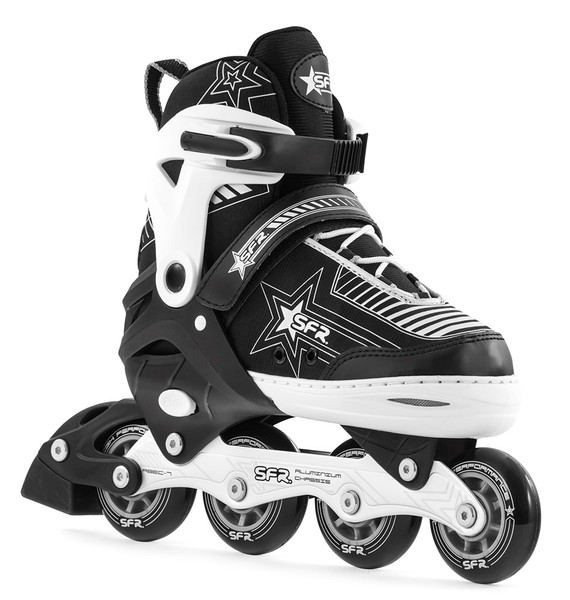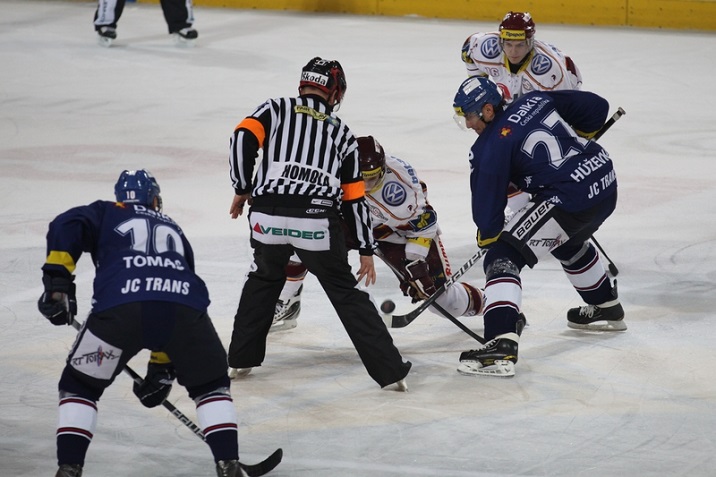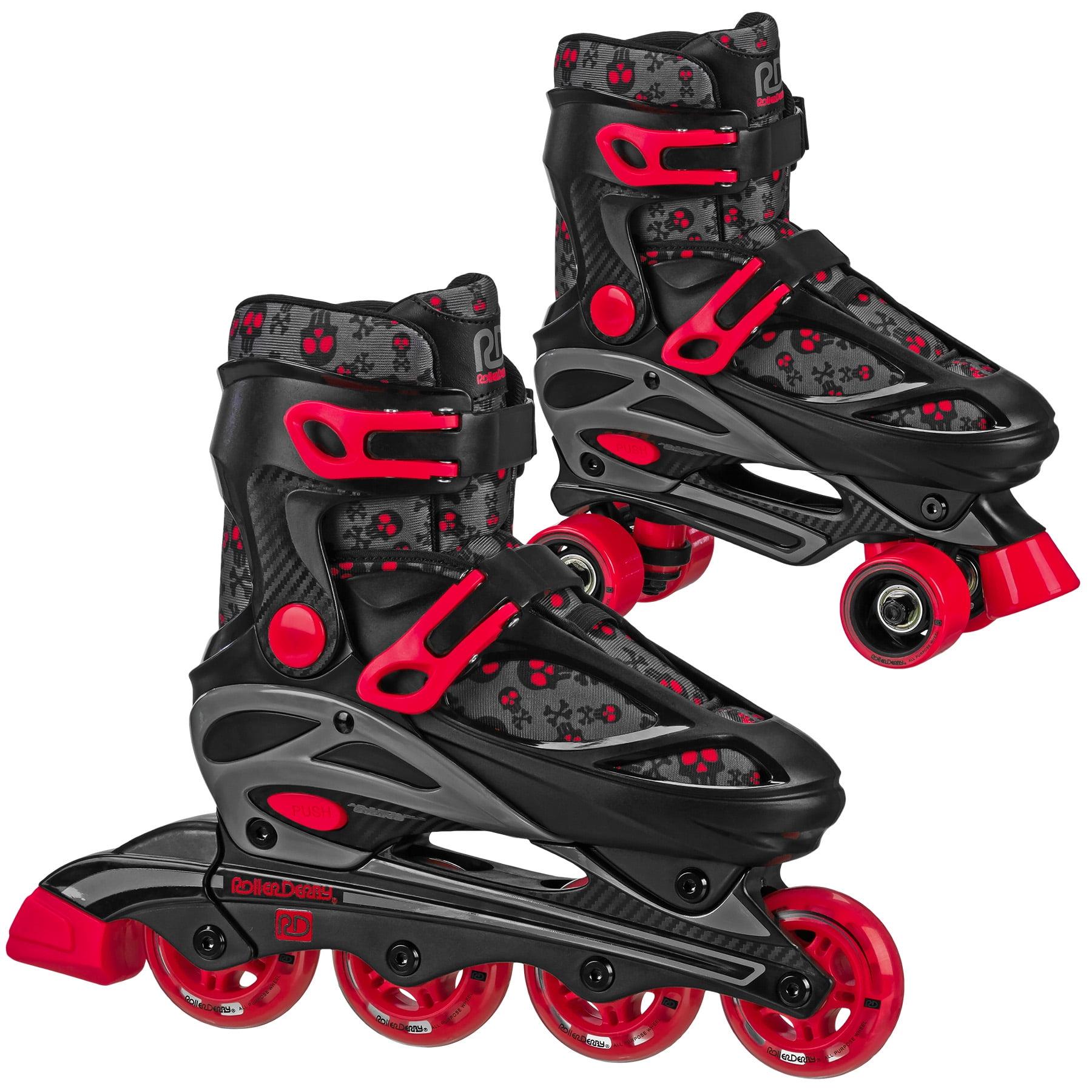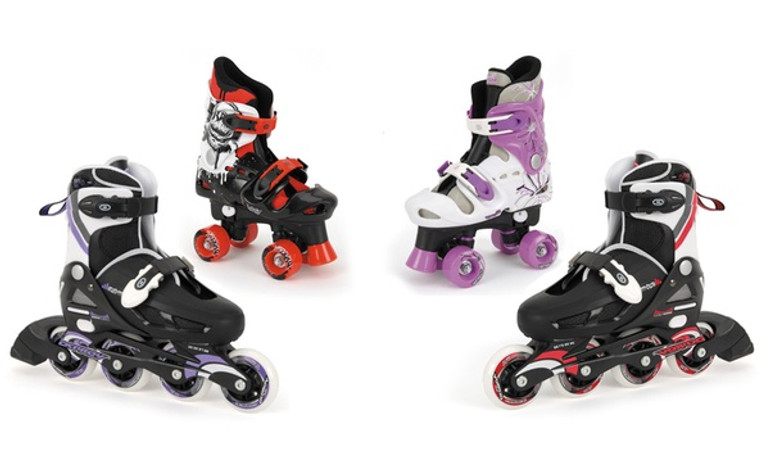The difference between inline skates and roller skates.
So, you're here because you're interested in pursuing skating, right?
Like most of us, we imagine you feel as though you're about to fall at the first hurdle: "What kind of skates do I buy?"
This post will provide you with a guide on how to choose your first pair of skates, hopefully making the overwhelming amount of new information a little easier to navigate.


The Easy Stuff
Before delving into the nitty-gritty of the skating world, it will prove useful to lay out the basics.
The above two images show an inline skate (or rollerblade) on the left, and a quad skate (or roller skate) on the right.
Wheel positioning and balance
From the images above, we can see that the inline skate has it's wheels positioned along the centre of the skate in a line. The wheels on the quad skate are positioned two at the front and two at the back, side by side.
Beginners may prefer to go for quad skates, as the more even spread of the wheels aid with balance.
However, beginning on inline skates is not an impossible task. This is because the boot of an inline skate goes higher up the ankle than a quad skate does, providing some stability.
Skate boot material
Both quad skates and inline skates can be made from hard plastic or a softer trainer-like material. Whilst the trainer-style boot may be perceived as looking more comfortable, the plastic boot can be equally snug! Especially with the use of a roller-skate oven, a plastic boot can be baked which allows the boot to be manipulated into a position that suits each individual rider.
Braking
The brakes on the skates can also be seen from the images above. The inline skate has a heel stop, located at the back of the skate, whereas a quad skate has a toe stop, located at the front of the skate.
When an inline skater wishes to stop, they will position the skate with the brake on it slightly in front of them. Then, they will lift their toes up causing the brake to contact the ground.

When a quad skater wishes to stop, they will lean more heavily on one side, leaving the other foot behind them. This will allow them to lift their heel up, causing the toe stop to touch the ground. Unlike the inline skate, both quad skates are equipped with a toe stop, so it doesn't matter which foot they use to stop.
Generally, beginner skaters find the toe stop easier to use than the heel stop.
The Specific Bits
The above information is all well-and-good for the basics of deciding which kind of skate you want. However, if you want skates that are more specifically tailored towards what you aim to achieve as a skater, the following information is for you!
Speed and Manoeuvrability
These two qualities are where inline and quad skates vary. Inline skates are more suitable for picking up speed, whereas quad skates are easier to manoeuvre in. These qualities mean that a particular type of skate is more suited to a certain sport.
Sports
If you want to use your skates to get involved in roller sports, the type of roller sport that you choose will affect the type of skates that you buy.
For example, sports that prefer the use of quad skates include artistic skating, roller derby and jam skating, due to the flexibility and manoeuvrability required in these sports.

Sports that prefer inline skates include speed skating, slalom skating and roller hockey, due to inline skates being more adapted for speed. Manoeuvrability is also not a vital quality for these sports, so it doesn't matter that inline skates aren't as easy to manoeuvre in.

Wheel size
Similar to the above, the size of the wheels also contribute to the speed and manoeuvrability of a pair of skates. Larger wheels (around 60-70mm) are suitable for outdoor skating as they glide over bumps more smoothly. Smaller wheels are better suited to artistic skating for the purpose of precision.
Bearings
The quality of the bearings used on a pair of skates will affect the length of time that the wheels will continue to roll for after pushing off. Bearings are rated using the ABEC scale, however this is mostly irrelevant to skates- unless you want to be skating at 100mph!
When it comes to skates, a bearing rating of ABEC-1 or ABEC-3 will be fine.

So, which skates should I buy?
Again, the decision on what kind of skates you should buy is ultimately down to which type of skating you wish to pursue. To summarise the above information:
Quad skates (or roller skates) are better suited for:
- Beginners, as they provide more stability and are easier to brake with
- Those wishing to skate for manoeuvrability over speed
- Those interested in artistic skating, roller derby, jam skating or any other roller sport that prefers the use of quad skates
Inline skates (or rollerblades) are better suited for:
- More experienced skaters, although beginners can still use inline skates
- Those wishing to skate for speed over manoeuvrability
- Those interested in slalom skating, roller hockey or any other roller sport that prefers the use of inline skates.
Which type of skates interest you the most? We hope this article was useful for your decision-making!


